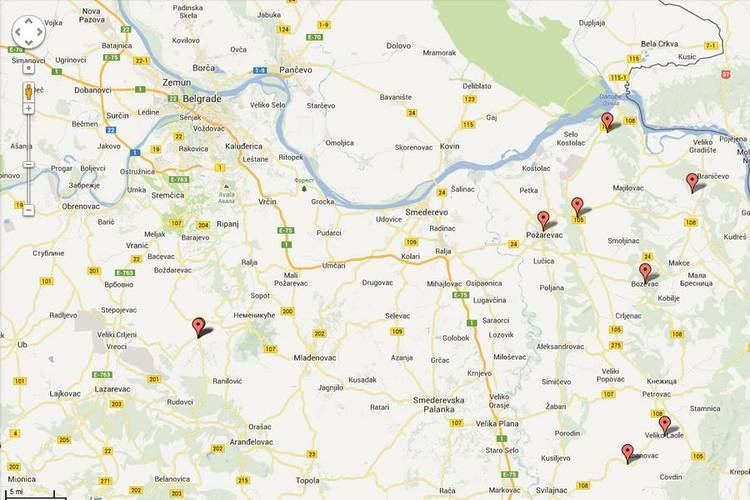Country Serbia Municipalities 7 and 1 city - Cities and towns 7 | Settlements 189 Area 3,865 km² | |
 | ||
Points of interest Golubac Fortress, Silver Lake, Gornjak monastery, Čačalica, Pek Destinations | ||
The Braničevo District (Serbian: Браничевски округ/Braničevski okrug; [brǎnitʃɛv̞ɔ]) is one of nine administrative districts of Southern and Eastern Serbia. It expands in the north-eastern parts of Serbia. According to the 2011 census results, it has a population of 180,480 inhabitants. The administrative center of the district is Požarevac.
Contents
- Map of BraniC48Devo District Serbia
- History
- Culture
- Municipalities
- Economy
- Demographics
- Ethnic groups
- References
Map of Brani%C4%8Devo District, Serbia
History
In the 9th century, a Slavic (or Serb) tribe known as Braničevci are mentioned living in the region. In this time, the town named Braničevo also existed in the area, at the estuary of the river Mlava into Danube. In the Early Middle Ages, Braničevo became a part of the First Bulgarian Empire. After the conquest of Bulgaria, the Byzantines established the Theme of Sirmium in the wider region south of the river Danube. Syrmia, and hence Braničevo, came to be contested between Kingdom of Hungary on the one side, and the Byzantine Empire and the Second Bulgarian Empire (after its independence from the Byzantines) on the other. In the 13th century the Hungarians established the Banate of Braničevo (Banovina of Braničevo), but later in the century two local Bulgarian rulers, Darman and Kudelin, became independent and ruled over Braničevo and Kučevo. In 1291, they were defeated by the Serbian king, Stefan Dragutin, who joined Braničevo to his Syrmian Kingdom. Under his rule the town of Braničevo became a seat of the Eparchy of the Serbian Orthodox Church. The region later belonged to subsequent Serbian states, until it was conquered by the Ottoman Empire in the 15th century. In the 14th century, the region was in a possession of local rulers from the House of Rastislalić. During the Ottoman rule, Braničevo was part of the Sanjak of Smederevo, and since 19th century, it is again part of the Serbian state.
Culture
In the mid-nineteenth century, at the time of the Serbian state emancipation, Požarevac became, along with Kragujevac, the second metropolis of Prince Miloš Obrenović. During his lifetime, Prince Miloš Obrenović had erected monuments to his memory in Požarevac:
Some of the places of cultural importance in Požarevac are:
Municipalities
The district encompasses the municipalities of:
Economy
Business facilities of this district are concentrated in the vicinity of the cities of Požarevac and Costal. The most prominent is the food-industry giant: Agricultural-industrial Combine Požarevac which provides employment to huge number of men and satisfies one quarter of the overall demands of Serbia.
Demographics
According to the 2011 census results, the Braničevo District has a population of 183,625 inhabitants.
Ethnic groups
Ethnic composition of the Braničevo district:
